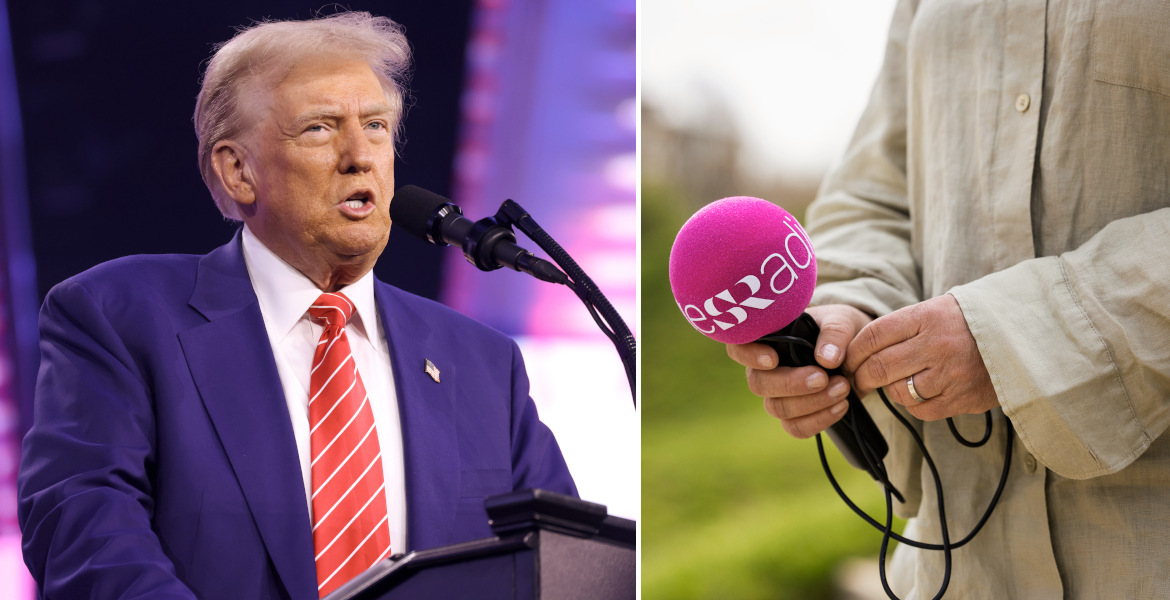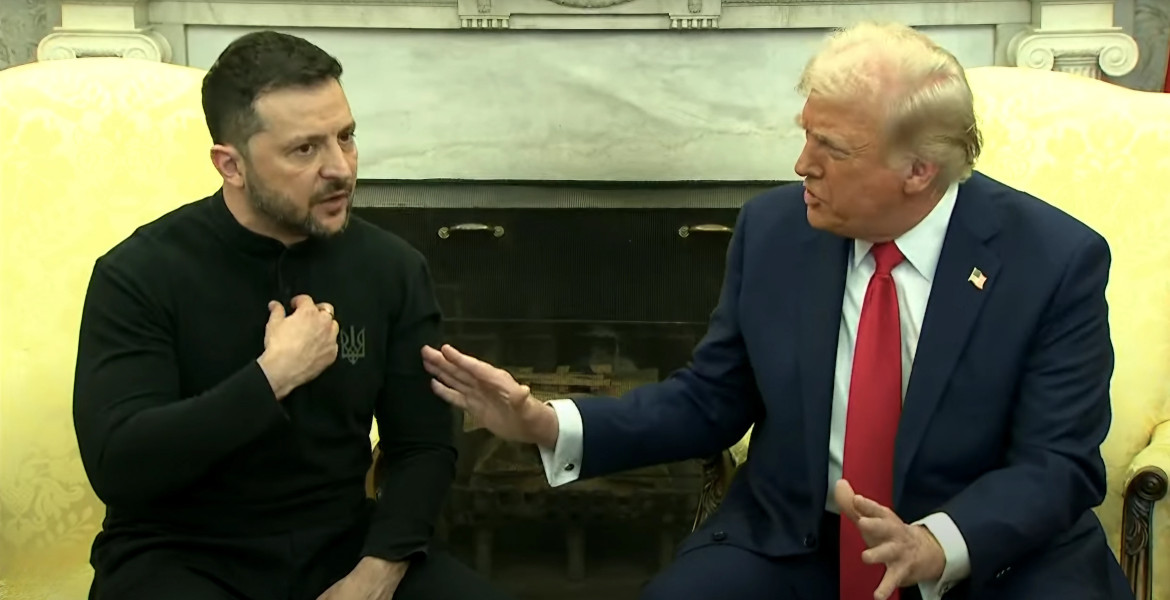People in the West today are exposed to claims about global dangers that are manufactured and enforced for political reasons by international organisations in collaboration with member state governments. On the surface, these issues may seem credible. Climate alarmism is a case in point, but the most recent and perhaps most striking example is covid-19, where a disease that primarily affects the elderly was declared a pandemic that threatens everyone. Fittingly, the medical threshold for defining a pandemic had previously been lowered.
The general impact of covid was medically no greater than that of a more serious seasonal flu, but for its sake politicians in various countries completely changed life, closing schools and commercial activities, stopping some professional activities, which – despite public support – caused the destruction of many individual businesses, and so on. It simply changed the daily lives of virtually all age groups and severely damaged the economies of states for a disease that was generally not nearly as serious as claimed. And coercive measures were applied to populations, violating their personal integrity by demanding compulsory vaccination.
Opponents of this behaviour were subjected to severe harassment and persecution in the media, including social media; to contempt and action by frightened citizens (see below); and people in certain public service professions – or otherwise working for the public – could suffer severe consequences. This was much the same treatment that members of the Sweden Democrats faced when protesting against mass immigration less than a decade ago. The effects of the vaccines then turned out to be less important than natural immunity for many people. However, they also caused significant side effects and many deaths, the full significance of which is not yet clear.
A common feeling in the modern society is the apparent lack a meaningful existence
The underlying psychological conditions that were used to implement measures against covid are those that are the basis for the creation of collective psychosis. These are described in the theory of “mass formation” or “mass formation psychology”, which is ultimately based on emotions that a significant part of the population has or has been instilled with1. One of these is a widespread fear that can be whipped up, for example, by the mass media. But this reaction is linked to persistent underlying emotions that are said to have grown in importance and are now very important to many people. One is the consequence of too few social contacts, which for many leads to a feeling of loneliness. The other is another common feeling in modern society: the apparent lack a meaningful existence. For many people, life simply seems too empty, too meaningless. Media of all kinds also often have a negative bias and support this by preparing people to believe the worst. This contributes to a latent attitude of dissatisfaction and frustration, creating a tendency towards aggression that can easily flare up when an event occurs that really affects and frightens people. A virus that threatens humanity with mass death then fulfils this requirement.
However, in order for the above components to cause a mass psychosis and then maintain its power for a sufficiently long time, the government of the country (here in conjunction with the relevant international organisation) must use mass formation, i.e. mass formation psychology. This involves psychological operations (psy-ops) of the kind used in war against enemy populations. Such methods are now being used against their own people. They involve indoctrination by any means possible, using all the resources of the public sector, combined with media of all kinds and civil organisations, all channels delivering a narrow, powerful and consistent message. This consists of a description of a dangerous social crisis of the utmost importance, with major personal consequences for citizens. The description of the consequences of the crisis should be designed to immediately reinforce the fears of the population that have already been created by the media. Most importantly, the government had to present a solution to the crisis.
Covid-19 fit the bill. It was a (supposedly) brand-new virus that could infect at lightning speed and often appeared to cause death. All of this was playing out in China, where the outbreak began and dramatic countermeasures were taken. Whole cities were shut down, and healthy people seemed to suddenly just die, with no previous signs of illness.
The reaction to the perception of a rapid and widespread spread of a dangerous infection created a considerable amount of fear, which led people to be prepared to give the government even more power than the country’s constitution allowed. There was enormous peer pressure, and people wanted only effective countermeasures to prevent or stop the outbreak, event or process. And it was generally accepted that the measures taken by the state were coercive. No attention was paid to issues and considerations other than those related to the crisis. Harmful consequences of the measures taken were ignored. A long-term form of collective hypnosis had emerged2. And like all hypnosis, it means that people can be led in dangerous directions. People can become highly radicalised, and their private morality no longer plays the role it once did. So much depends on the management of the psychological operation. But in democracies, such tasks cannot be entrusted to politicians or anyone else.
To ensure the credibility of the threat and its effect on people’s psychology, mass formation requires supporting measures that can maintain the strength of this fear and peer pressure. This means that indoctrination must not be challenged by effective and credible sources of alternative information. Alternative explanations and views should not be allowed to emerge and disrupt the government’s message. While constitutions prevent many governments from taking effective censorship measures, the fact that the world’s media now appear so unified – and are controlled by a group of like-minded decision-makers – allows them to support the authorities without being constrained by laws. The media have pushed the message while, with few exceptions, maintaining censorship of alternative information.
Dissenting writers and oppositional views were not allowed to appear or were not published. In the past, the diversity of the media and the professional ethics of the sector made such behaviour impossible, but with the elimination of so many independent voices in the media landscape in favour of concentrated ownership with an international flavour, propaganda could now be pushed without the counter-arguments being widely disseminated.
So, for all the boasting about the multiplicity of channels and outlets for people’s opinions, public opinion has never been so silenced by those in power as it is today. This highlights something that needs to change in society, namely the danger of opinion formation being paralysed or monopolised in this way. When all the established parties in Sweden rallied behind the covid policy, there was no significant opposition in the media.
It is frightening that journalists are so beholden to politicians. There is only a small group of alternative media with limited reach. By using all possible channels, including those with high credibility such as medical ones, the fear was amplified and people’s anxiety and fear was directed towards supporting all measures prescribed by the authorities. This also created a new sense of social connectedness between people and gave many a common meaning to life (for a while). It also meant that people’s frustration was powerfully directed at those who opposed the measures or doubted parts of the authorities’ narrative. And for a long time, peer pressure did not allow for explicit changes in the majority’s thinking.
So what politicians and authorities have done with regard to covid is to apply a theory that allows the creation and maintenance of mass psychosis.
Very radical and objectively life-destroying measures can then be supported by the masses, even though they themselves will be severely affected. The current energy policy, which is a consequence of the theory of carbon-based global warming, is another similar example. Views on freedom and human rights are partly ignored. Mass formation is in fact a deliberate, government-induced distortion of people’s perception of reality. It is unacceptable that such methods are being used against Swedes in Sweden today.
The sequence of events is likely to be repeated in the future, and each time it is likely to be based on some perhaps misleading, but in any case probably completely exaggerated reason. Among other things, international bodies have suggested that pandemics will return – perhaps soon – and are now trying to take over the power to decide what action should be taken. The World Health Organisation (WHO) wants to decide when such a crisis is deemed to have occurred and what measures, such as the lockdown of countries, are required.
The current proposal could give the head of the WHO – a former minister in the Ethiopian dictatorship – the power to decide. The targets devised by the UN and the World Economic Forum can be achieved through various threats designed to induce mass psychosis. Carbon-based global warming was an early example. And much of this is done with the aim of forcing global decision-making in general and creating a world state.
Dan Ahlmark
Sources and References:
(1) Medium – What is Mass Formation?
(2) The Epoch Times – Mass Formation and the Danger of Technocracy








